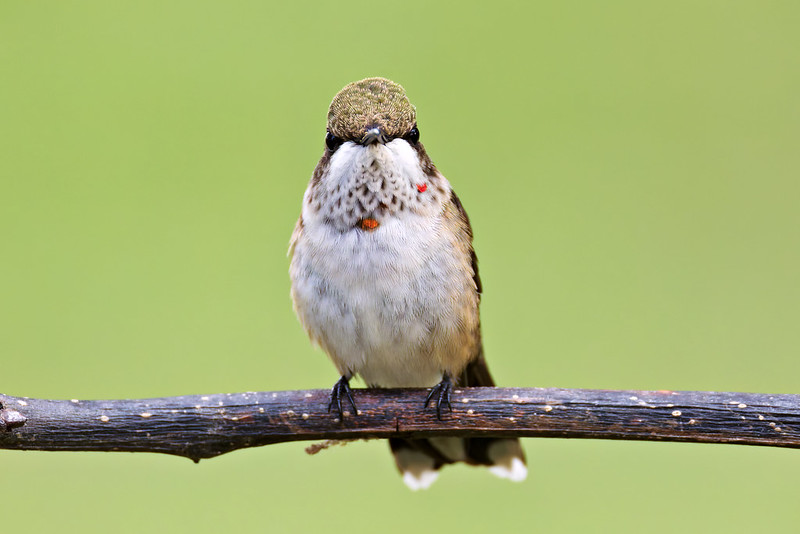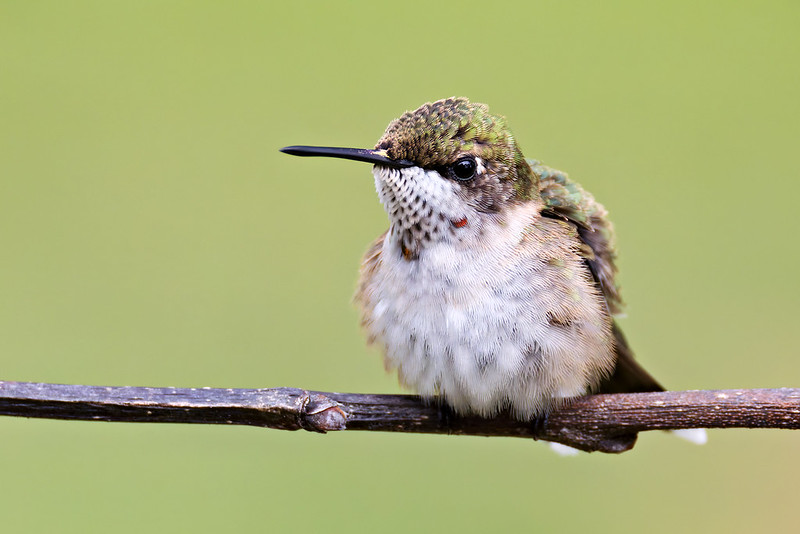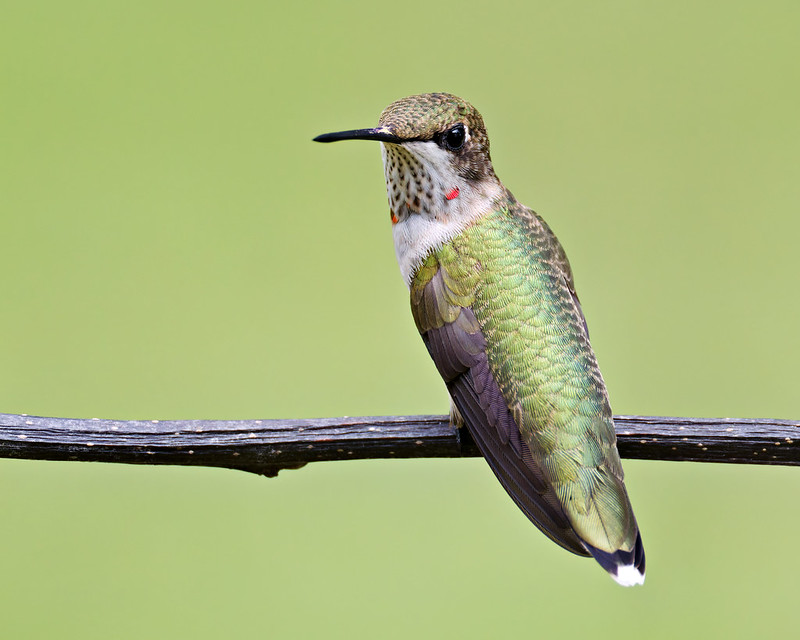One of the joys of photographing wildlife in my yard here in Arkansas is witnessing the subtle transitions in young birds. This juvenile Ruby-throated Hummingbird gave me a brief but rewarding opportunity as it perched calmly, offering a clear view of its developing throat feathers.

Spotting the Signs of a Young Male
What immediately stood out were the faint red flecks beginning to show on its throat. These early spots are a reliable indicator that this is a juvenile male. As he continues to mature, those scattered flecks will gradually spread and darken into the vivid ruby gorget that defines the species. The full red gorget typically doesn’t appear until after their first winter molt, so young males with just a few red feathers are still considered immature.

Juveniles Make Cooperative Subjects
Unlike adult hummingbirds, which are often restless and fast-moving, juveniles tend to linger a bit longer. That extra moment of stillness gave me the chance to capture some detailed shots without having to rush. It’s one of the things I appreciate most about photographing young birds, especially during transitional stages like this.

Quick Tip for Hummingbird Photography
If you’re hoping to photograph hummingbirds, try setting up a perch near a food source and wait patiently at a distance. Use a fast shutter speed (1/2000 sec or faster) to freeze their motion and continuous autofocus to stay locked on when they move. Morning light often provides soft, even illumination, which works well for revealing iridescent feather detail.
The Value of Patient Observation
Moments like these remind me that even a familiar backyard visitor can offer something new. Watching a hummingbird’s plumage change over time deepens my appreciation for their growth and behavior. Bird photography is often about paying attention to subtle details, and these quiet moments provide a chance to slow down and truly observe.
Closing Thoughts
If you’re fortunate enough to have Ruby-throated Hummingbirds in your area, take some time to watch the juveniles. You might spot the first glimmers of red and witness the early stages of transformation. These signs of change are easy to overlook but incredibly rewarding to capture.
